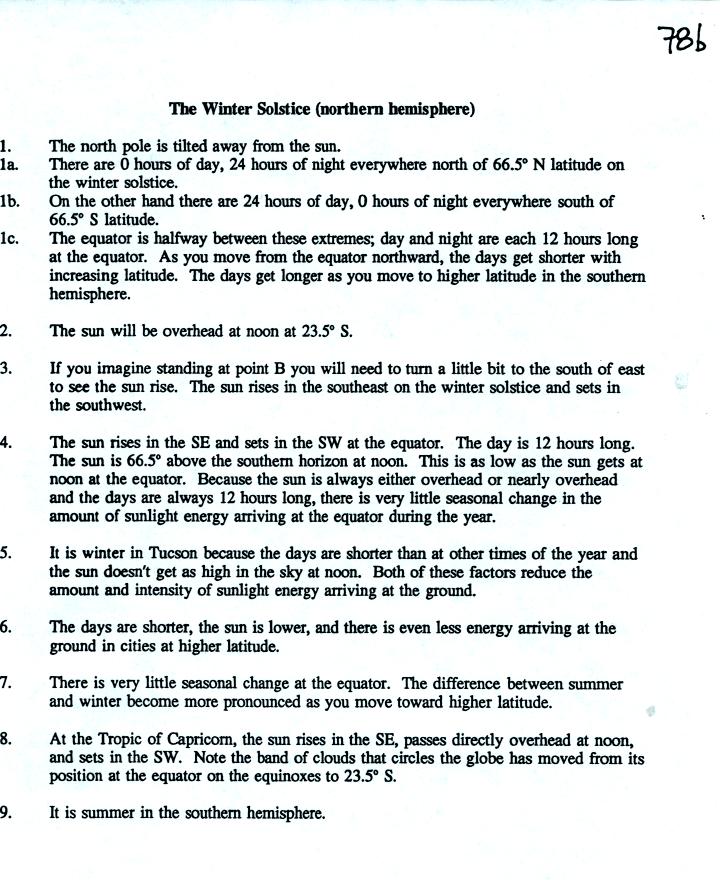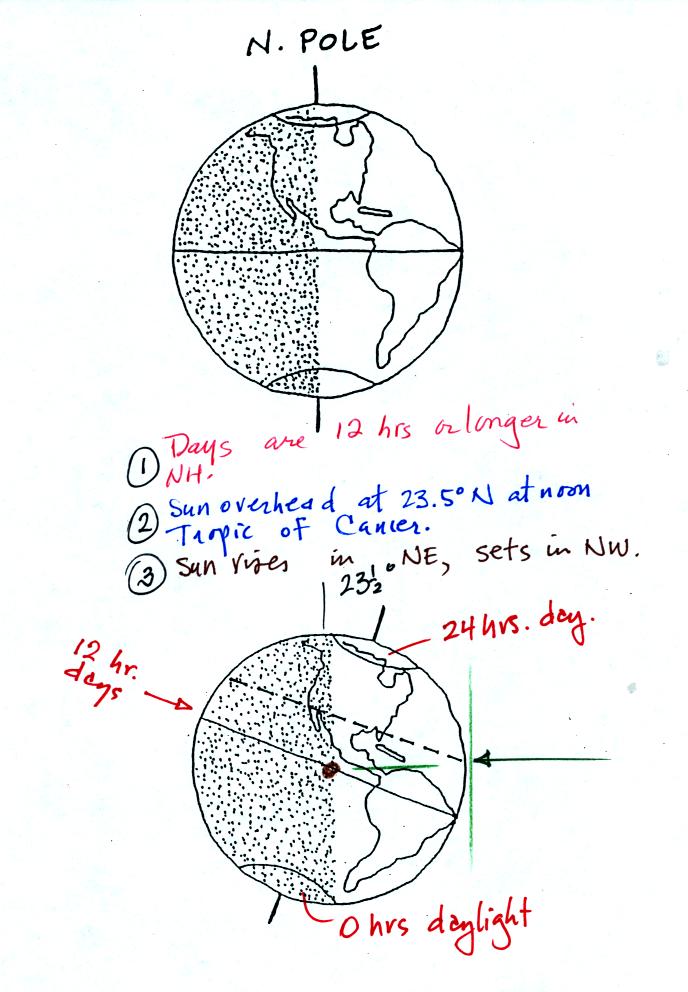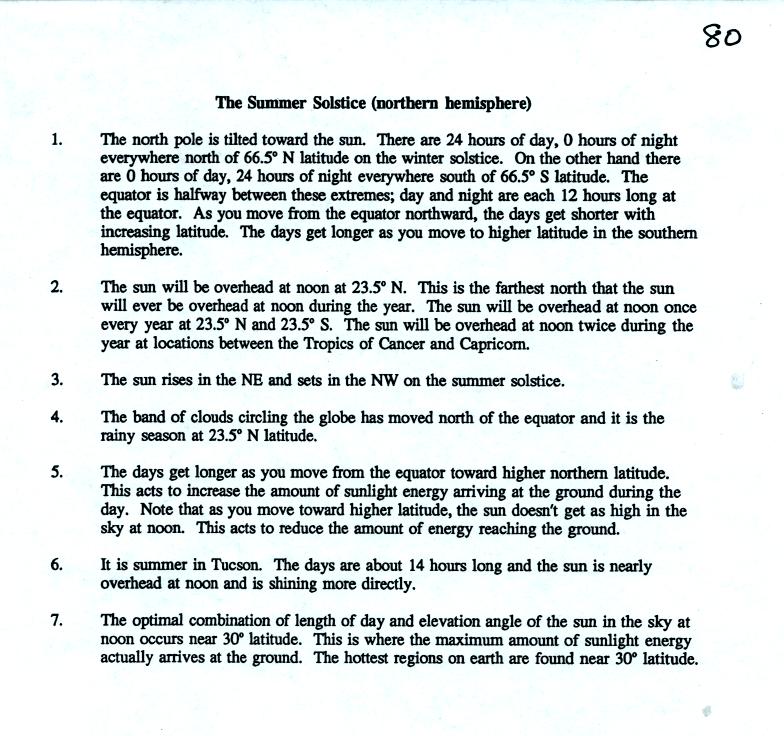Monday Mar. 6, 2006
The Expt. 2 reports have been graded and
were returned in class today. Revised reports are due on Wed.
Mar. 22. Please return the original report with your revised
report.
Optional Assignment #3 was returned in class. Answers are available online.
Answers to the surprise optional assignment
will become available sometime Tuesday.

On the equinoxes, the days are 12 hours long everywhere on the
globe (with the exception of the poles), the sun rises in the east and
sets in the west, and the sun passes overhead at noon at the
equator.

There is a lot of information on this figure.
You need work
through this figure numbered point by numbered point. You'll find
written explanations of each point on p. 77b in the photocopied notes
which is reproduced below.
The cloud shown next to Point 5 above refers to a band of clouds that
circles the globe at the latitude where the sun passes overhead at
noon. You can usually make out this band of clouds on a global
satellite picture. At the present time, just a few weeks
after the fall equinox the band of clouds is near the equator. It
will move south of the equator as we get closer to the winter
solstice. Then it will move back to the equator by next March and
move into the northern hemisphere next summer.

We start out with the orienttation of the earth on the equinoxes
and then "rotate the earth" until we end up with the bottom picture
below.

Probably the easiest point to understand now is that the sun will
be overhead at noon not at the equator but at 23.5 S latitude.
That is called the Tropic of Capricorn. The sun's rays strike the
earth perpendicularly at 23.5 S latitude.
Days in the northern hemisphere are 12 hours long or shorter.
They grow shorter the further north you go. The sun rises in the
south eastern part of the sky and sets in the southwest.

See p. 78b in the photocopied notes for a point by point
discussion of this figure.

Now we start with the equinox orientation and twist the earth in
the other direction.

The lower figure above shows the orientation of the earth on the
northern hemisphere summer solstce. The sun will pass overhead at
23.5 degrees N latitude, the Tropic of Cancer. The sunrises in
the northeast and sets in the northwest. Days in the northern
hemisphere are 12 hours long (near the equator) or longer (at higher
latitudes).

Refer to p. 80 in the photocopied notes.









